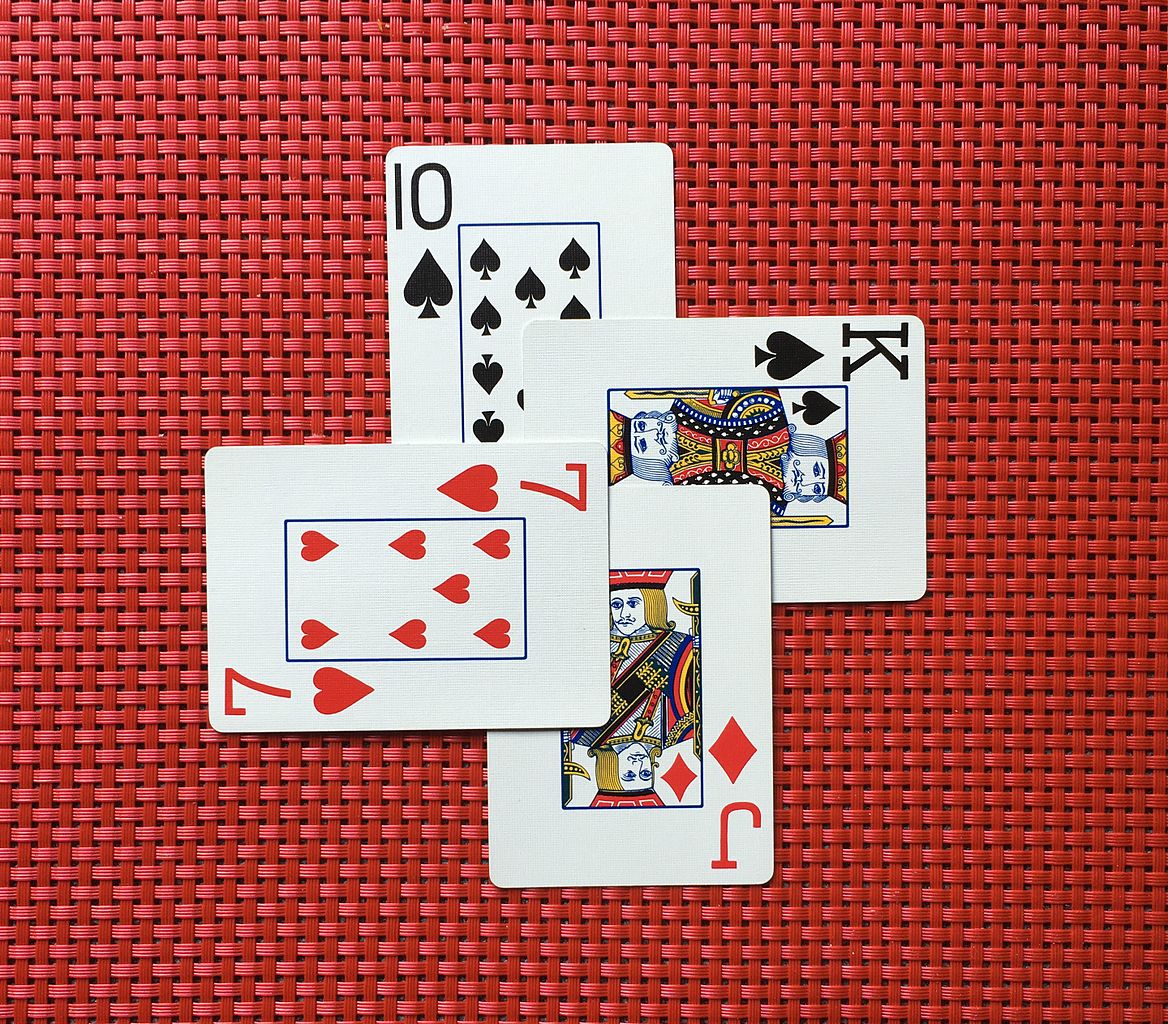Diamonds is a plain trick-taking game where ♦ Diamonds are trump, with prediction-based scoring. Players score 10 points for each bid trick that they took and potentially either 1 point for each excess trick (overtrick) or -10 points for each trick that they fell short of their bid (undertrick). Players compete against each other, without partnerships.
The Cards and Deal
Use a standard deck of 52 cards. For each hand, shuffle and deal the entire deck out, making sure that all players have an equal number of cards. Discard any remaining cards face up. They are out of play for this hand.
The Bid
In clockwise order, starting to the dealer’s left, each player predicts and names the number of tricks they will take this hand. Either write down each player’s bid or have each player take a poker chip for each trick they bid (of any color but white or blue, which are used for scoring). Players cannot change a bid once made.
The Play
The player with the lowest ♣ Club, typically 2♣ (the Two of Clubs) goes first, playing this card face up to the middle, starting a new trick. (Check the discards for ♣ Clubs that are out of play.)
A player can not lead with ♦ Diamonds unless Diamonds have already been played as trump or if Diamonds are all that they have left in their hand.
A player must play a card of the same suit if they have it; otherwise they can play a card of any other suit.
After each player has played a card, the trick is complete. The highest-ranked card of the played suit wins the trick, if no ♦ Diamonds have been played, otherwise the highest-ranked Diamond wins. Aces are high. Whoever wins takes the trick and then plays a card to open the next trick.
Play continues until everyone’s hands are empty.
Scoring
A player scores 10 points for each bid trick they took. They potentially get either 1 point for each overtrick (trick they took in excess of their bid) or they lose 10 points for each undertrick (bid trick they failed to take). Examples:
- Player A bid 3, took 3, scored 30 (3 bid tricks x 10).
- Player B bid 5, took 6, scored 51 (5 bid tricks x 10 + 1 overtrick x 1).
- Player C bid 6, took 4, scored 20 (4 bid tricks x 10 – 2 undertricks x 10).
If playing with poker chips, remember that white = 1, red = 5 (unless used to represent bids), and blue = 10. If playing with poker chips, a player can’t go below zero (e.g., they bid 5 tricks and took 2 would normally be a score of -10 but if they don’t have 10 points they don’t go below zero).
If no player has scored 500 or more points, or some other total agreed to at the start, the player to the left of the last dealer deals a new hand.
Commentary
A week ago I taught my teenage son and my wife American Hearts. My wife especially disliked that it was about avoiding taking tricks, and I don’t think she was fond of the fact that the Queen of Spades was – randomly, to her mind – a penalty card. I thought of teaching her Spades this week, but I thought she would dislike the penalty for overtricks. So I invented my own trick-taking card game instead.
My design goals:
- Keep the rules streamlined and simple.
- Winning more tricks is always better.
- Allow bidding and scoring to easily be handled using poker chips rather than a pen and paper.

This work is licensed under a Creative Commons Attribution 4.0 International License.
Image credit: Four overlapping playing cards by Newwhist.


